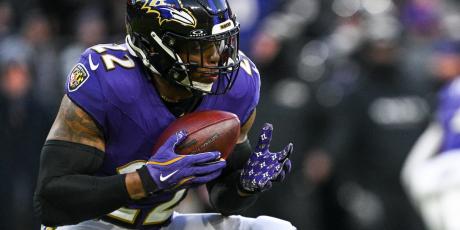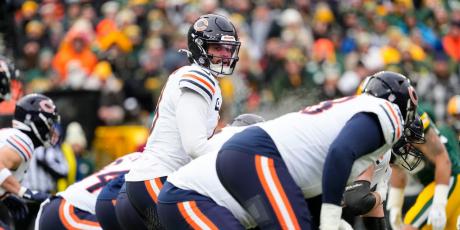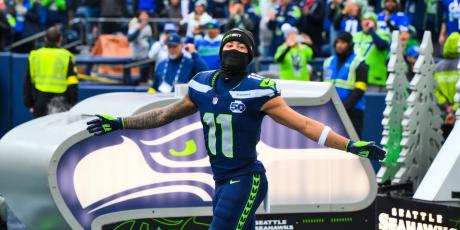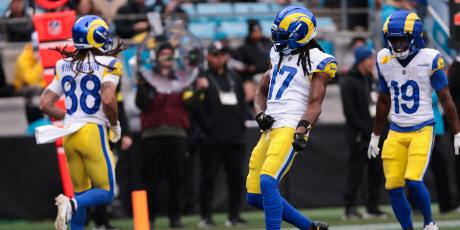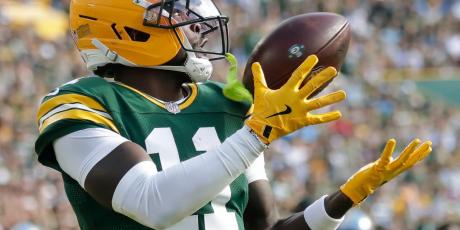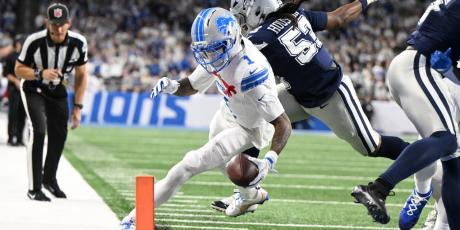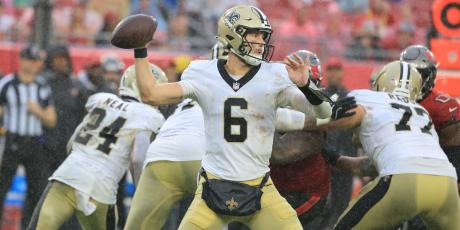How Adam Gase Impacts the Dolphins' 2016 Fantasy Outlook

Last offseason, my offensive coordinator research resulted in some potential league-winning conclusions like the fact that Chan Gailey could prop up two top fantasy wide receivers, a Dirk Koetter backfield is usually a goldmine, and Greg Olson would push Blake Bortles to lean heavily on Allen Robinson.
The 2016 season will see eight teams1 with new play callers, five of whom have previous NFL experience calling plays. Over the course of the offseason, I will examine these five play callers in hopes of unearthing some tendencies that might translate to valuable fantasy nuggets.
If you would like some insight into likely tendencies of the NFL's newest play callers, be sure to read Chris Raybon's 3 Key Fantasy-Relevant Tendencies of Each NFL Offensive Coordinator.
Changes to the 2016 Methodology
In 2015, I relied heavily on raw offensive data, focusing on things like total yards, attempts and fantasy points scored. While this information was plenty valuable, the 2016 iteration of this study will focus much more on pass/run splits and market share numbers. Though overall production of an offense and its players is influenced by play calling, in the end the most talented players are going to score the most fantasy points.
By focusing on ratios and market shares, we can glean more insight into the part of the game where the play caller has the most control, and raw data can be used as a reference point when necessary. Coaching tendencies do not always follow a coach from one team to the next, but as Chris Raybon points out, "what a play-caller has done in the past and what he will do in the future should be viewed in the context of the personnel at his disposal." That is exactly what this exercise hopes to achieve.
A Snapshot of Gase’s History
| Year | Team | Pass | Run |
|---|---|---|---|
| 2013 | DEN | 60.1% | 39.9% |
| 2014 | DEN | 58.5% | 41.5% |
| 2015 | CHI | 54.3% | 45.7% |
| Year | Team | Att | Yds | TD |
|---|---|---|---|---|
| 2013 | DEN | 11 | 15 | 7 |
| 2014 | DEN | 12 | 15 | 9 |
| 2015 | CHI | 6 | 11 | 12 |
| Year | Team | Att | Yds | TD |
|---|---|---|---|---|
| 2013 | DEN | 2 | 1 | 1 |
| 2014 | DEN | 9 | 4 | 2 |
| 2015 | CHI | 25 | 23 | 23 |
With just three seasons under his belt as a primary play caller, Adam Gase has quickly built a reputation as one of the great offensive minds in the game. Because he was coaching Peyton Manning through what was arguably the best two year quarterback stretch in history, the passing numbers in Gase’s early play calling career are quite inflated. Where Gase seems to excel is in running an efficient offense with running backs that are going to play a major role, highlighted by the fact that Gase's teams have ranked in the top 12 in the league in rushing attempts in each of the past three seasons. A closer look at Gase’s tendencies will see if the numbers support that theory.
Quarterbacks
| Comp | Att | Yds | TD | Int | FP | Comp % | TD/INT | AY/A |
|---|---|---|---|---|---|---|---|---|
| 24.9 | 37.6 | 295.7 | 2.42 | 0.77 | 21.3 | 66.3% | 3.3/1 | 8.3 |
| Year | Player | Games | Comp | Att | Yds | TD | Int | FP | Comp % | TD/INT | AY/A |
|---|---|---|---|---|---|---|---|---|---|---|---|
| 2013 | Peyton Manning | 16 | 28.8 | 42.2 | 348.3 | 3.44 | 0.63 | 27.2 | 68.3% | 5.5/1 | 9.3 |
| 2014 | Peyton Manning | 16 | 24.9 | 37.9 | 298.7 | 2.50 | 0.94 | 20.9 | 66.2% | 2.6/1 | 8.1 |
| 2015 | Jay Cutler | 15 | 20.9 | 32.7 | 240.2 | 1.31 | 0.75 | 15.8 | 64.4% | 1.9/1 | 7.4 |
As mentioned earlier, it’s virtually impossible to look at Peyton Manning's historic run and discern much about Adam Gase in terms of his effect on the quarterback position. Taking a deeper look at the 2015 season reveals evidence that Gase’s presence might have a positive influence on his quarterback’s efficiency, which is what we really care about in fantasy football.
In his only season under Gase, Jay Cutler finished with the best touchdown-to-interception ratio and Adjusted Yards per Attempt (AY/A) of his career, as well as the second-best completion percentage. Cutler was able to accomplish this despite missing his three primary weapons (Alshon Jeffery, Martellus Bennett, and Matt Forte) for a significant portion of the season.
Running Backs
| Touches | Receptions | Total Yards | PPR FP | % of Team Touches |
|---|---|---|---|---|
| 30.8 | 4.8 | 152 | 26.3 | 57.6% |
| Year | Touches | Receptions | Total Yards | PPR FP | % of Team Touches |
|---|---|---|---|---|---|
| 2013 | 32.2 | 5.8 | 166.6 | 28.7 | 55.9% |
| 2014 | 29.3 | 4.3 | 143.7 | 25.1 | 55.6% |
| 2015 | 30.8 | 4.4 | 145.8 | 25.1 | 61.5% |
| Year | Player | Games | Touches | Receptions | Total Yards | PPR FP | % of RB Touches |
|---|---|---|---|---|---|---|---|
| 2013 | Knowshon Moreno | 16 | 18.8 | 3.8 | 99.1 | 18.4 | 58.4% |
| 2014 | C.J. Anderson | 15 | 14.2 | 2.3 | 78.2 | 14.0 | 48.5% |
| 2015 | Matt Forte | 13 | 20.2 | 3.4 | 99.0 | 16.4 | 65.4% |
Cumulatively, Gase’s relative running back usage has been on par with the rest of the league (the 2015 league average for percentage of team touches by running backs was 57.2 percent), but given an offense without Peyton Manning, Gase’s Bears ranked in the top four in percentage of team touches by running backs. This large running back pie led to an offense that was able to support two backs that averaged double-digit touches per game in 2015.
When presented with the opportunity, Gase hasn’t shied away from having a featuring back. Knowshon Moreno (2013) and Matt Forte (2015) both ranked in the top 10 in PPR fantasy points per game at the position, although Gase has still managed to give 100-plus touches to multiple backs in all three seasons as a play caller.
Despite the healthy touch volume that Gase has offered his backs, he has limited their activity in the passing game. Backfields in an Adam Gase offense have accounted for just 4.8 receptions per game, a total that would have ranked 18th in the league last season. Even with one of the most versatile backs in the league, the Bears ranked 21st in running back receptions last year.
Wide Receivers
| Targets | Receptions | Rec Yards | Rec TD | PPR FP | % of Team Targets |
|---|---|---|---|---|---|
| 10.2 | 6.3 | 94.0 | 0.71 | 19.8 | 28.0% |
| Year | Player | Games | Targets | Receptions | Rec Yards | Rec TD | PPR FP | % of Team Targets |
|---|---|---|---|---|---|---|---|---|
| 2013 | Demaryius Thomas | 16 | 8.9 | 5.8 | 89.4 | 0.88 | 19.8 | 21.2% |
| 2014 | Demaryius Thomas | 16 | 11.5 | 6.9 | 101.2 | 0.69 | 21.2 | 30.5% |
| 2015 | Alshon Jeffery | 9 | 10.4 | 6.0 | 89.7 | 0.44 | 17.5 | 32.2% |
| Targets | Receptions | Rec Yards | Rec TD | PPR FP | % of Team Targets |
|---|---|---|---|---|---|
| 7.6 | 5.0 | 73.4 | 0.49 | 15.3 | 19.3% |
| Year | Player | Games | Targets | Receptions | Rec Yards | Rec TD | PPR FP | % of Team Targets |
|---|---|---|---|---|---|---|---|---|
| 2013 | Eric Decker | 16 | 8.5 | 5.4 | 80.5 | 0.69 | 17.5 | 20.3% |
| 2014 | Emmanuel Sanders | 16 | 8.8 | 6.3 | 87.8 | 0.56 | 18.7 | 23.4% |
| 2015 | Marquess Wilson | 11 | 4.6 | 2.5 | 42.2 | 0.09 | 7.3 | 14.3% |
Gase has been fortunate enough to oversee receiving corps that have each had a dominant, top-tier number-one wide receiver, and Gase used them accordingly, specifically as the X receiver in the offense. The average target market share for the "X" in Gase's offense (28 percent) is a figure that was surpassed by just six wide receivers in 2015. Alshon Jeffery’s per game production last season wasn’t as gaudy as Demaryius Thomas's the previous two seasons, but the takeaway is that Gase didn’t hesitate to force-feed Jeffery the ball with the lack of a serviceable complementary wide out.
Gase also had the luxury of two exceptional talents to trot out as his secondary targets in Denver, and their market share numbers reflected that. Any target share over 20 percent usually puts a receiver in a position to post WR2 or better PPR fantasy numbers.
Upon Gase’s arrival in Chicago, the talent level after the top receiving option dropped off significantly, and so did the targets. On a per game basis, a target market share around 14 percent barely puts a receiver in the top 50 at his position.
Tight Ends
| Targets | Receptions | Rec Yards | Rec TD | PPR FP | % of Team Targets |
|---|---|---|---|---|---|
| 6.1 | 4.2 | 45.2 | 0.71 | 12.9 | 16.8% |
| Year | Player | Games | Targets | Receptions | Rec Yards | Rec TD | PPR FP | % of Team Targets |
|---|---|---|---|---|---|---|---|---|
| 2013 | Julius Thomas | 14 | 6.4 | 4.6 | 56.3 | 0.86 | 15.3 | 15.4% |
| 2014 | Julius Thomas | 13 | 4.8 | 3.3 | 37.6 | 0.92 | 12.5 | 12.7% |
| 2015 | Martellus Bennett | 11 | 7.3 | 4.8 | 39.9 | 0.27 | 10.3 | 22.4% |
Although Julius Thomas turned in two consecutive top-10 fantasy seasons under Gase, Thomas’ fantasy success was mostly touchdown-dependent, and his target market share on a per game basis was relatively low when compared to other top tight ends in the league. Gase wasn’t necessarily ignoring the tight end position in Denver, but with two standout receivers in both seasons, feeding targets to the tight end wasn’t necessary.
Devoid of a true number-two wide receiver in Chicago, Gase adjusted his approach and utilized Martellus Bennett nearly as much as any tight end in the league. When active, Bennett’s target market share rivaled that of any other tight end -- he was on pace to finish in the top three at his position in terms of percentage of team targets.
What This Means for 2016
After leaving behind one of the most potent offenses in NFL history, Gase took over one of the least efficient scoring offenses in the league (Chicago scored on 27.8 percent of offensive drives in 2014, ranked 28th in the league) and turned it into one of the most efficient offenses (37.4%, 10th), despite missing three different key playmakers for significant portions of the season.
Gase's adjustments in pass-to-run ratio and touch and target shares suggest that he is able to conform his play calling strategy to highlight his roster's strengths and optimize his offense's production.
Now with the Dolphins, Gase will have the opportunity to shape an offense that currently lacks a true identity. Last season, Miami threw on 64.8 percent of plays (third-highest in the league), and scored on just 25.7 percent of their drives (second-worst).
Ryan Tannehill has underwhelmed in his four seasons with the team, and the departure of Lamar Miller to Houston leaves a massive hole to be filled in the backfield. Outside of Jarvis Landry, who generally catches passes that are glorified run plays, Miami has been without a receiving threat that can put much pressure on a secondary.
Though Jay Cutler's didn’t have a great 2015, the arrival of Gase had a positive impact on Cutler’s overall efficiency, and that’s precisely where Tannehill needs improvement. In 2015, Tannehill ranked 18th or worse in TD/INT ratio, completion percentage, and AY/A (min. 200 attempts). If Gase can help bring along DeVante Parker as expected, a true downfield and red zone threat combined with Gase’s influence could result in Tannehill returning to his top 10 fantasy QB form of 2014.
Given the fact that PlayerProfiler.com’s closest comp for DeVante Parker is A.J. Green, and that Tannehill's AY/A when targeting Parker in 2015 was over 10, it seems that Parker fits the profile as the fast, big-bodied wideout that Gase has grown accustomed to featuring as the X receiver in his passing offense. Even if Landry maintains his relatively large market share (28.7 percent in 2015), he and Parker often won't be seeing the same types of targets, plus Gase has proven that he is willing to filter the passing offense through two primary pass catchers. A target share that ranks in the top 20 in the league -- and the fantasy stats to match that opportunity -- is well within DeVante Parker’s range of outcomes.
After Parker and Landry, assuming Parker does inherit a healthy market share, how the rest of the targets will be distributed is anyone's guess and that goes for the tight end position, as well. Gase has shown that he will use the tight end heavily when needed, especially near the goal line, but if Parker and Landry absorb upwards of 45 percent of the targets, Jordan Cameron's value may hinge on those scoring opportunities alone.
In 2015, Cameron ranked among the top 10 tight ends in terms of red zone target market share (20.6 percent), but converted just 21.4 percent of those targets into scores (league average for tight ends is roughly 30 percent). Should Miami see a boost in scoring efficiency similar to the one Chicago saw upon Gase's arrival last year, there may be enough scoring chances to make Cameron a deep sleeper, especially since stats like touchdown rate tend to regress to the mean. Going into the season Cameron should be viewed as nothing more than a streaming cadidate or late flier in very deep leagues.
Probably the biggest question mark in the Miami offense is how the backfield will shake out. Early offseason rumors pointed to the Dolphins signing a veteran back to at least share touches with second-year back, Jay Ajayi, but after Miami failed to ink a running back via free agency, they spent a third round draft pick on Kenyan Drake.
On last week’s Most Accurate Podcast, Brandon Niles surmised that the Drake pick solidifies Ajayi as the workhorse, while John Paulsen contended that the rookie could have a Charles Sims-like role in the offense. The obvious concern there is Gase’s relatively low use of running backs in the passing game. It’s still months before a snap has been taken in training camp, but the most likely outcome seems to be that Ajayi flirts with a 60 percent backfield touch share, which would have ranked in the top 10 of all backs in 2015.
Should Gase implement an offense that is closer to the league average in terms of pass/run splits and improve the team's scoring efficiency (both often regress to the mean despite a coaching change), Jay Ajayi has 220-plus carry potential, and with some pass catching ability himself, he has a fantasy ceiling that lands him squarely in RB1 territory.
Editor's Note: Early bird rates for 4for4's Premium and DFS Subscriptions are available now here.
1. Ten if you consider Rob Boras and Jim Bob Cooter, who will retain play calling duties after being promoted mid-season in 2015.

